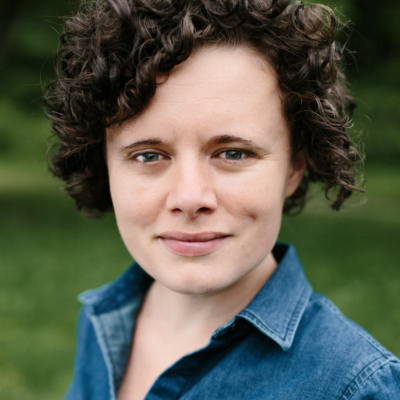art A solitary figure lies splayed out in a grassy field; an anonymous hand pickpockets a young girl as she helps a man collect his fallen groceries; a lonesome creek winds its way past the trunks of two dead trees bathed in moonlight. Sounds disjointed, right? These three scenes come from prints by Betty MacDonald, Foust—who, like Prince and Homer, is known by a single name—and Margie Crisp, the three artists currently displaying their work at Migration, on the Downtown Mall.
 “United” by Betty MacDonald at Migration: A Gallery |
At first glance, Migration’s “Women in Printmaking: A Variety Show” seems a default summer exhibit hastily cobbled together. Aside from sex and medium, the artists have very little in common, certainly not enough to warrant a group show. But first impressions, or so the saying goes, can be deceiving. And, if you take the time to consider and reconsider the works by MacDonald, Foust and Crisp, a subtle and nuanced connection emerges.
Betty MacDonald’s work is clever and playful. Her “Floating Hearts” don’t float but flop atop what appear to be long poles. In “Motioning Growth,” a stern human finger gestures a bundle of foliage to come hither; the weeds and flowers recoil in horror. But for all their levity, MacDonald’s prints eventually betray an underlying sense of isolation: The hearts look deflated and remote; at odds, man and nature are separated by an increasingly vast gulf.
Foust relishes a different kind of isolation. Forgoing MacDonald’s lighthearted touch, she portrays stark scenes from the streets and apartments of cities not unlike her hometown of Richmond. For Foust, the most lonesome spaces are those filled with people: people ready to steal from you sooner than look at you, people who refuse to forgive, who turn away and won’t turn back. Unwilling to laugh at life, Foust finds people alone together.
Margie Crisp designs prints defined by romantic solitude. Her favored perspective—a lofty and removed bird’s-eye view—detaches the viewer from the pastoral scenes she depicts. We see the country garden but we can’t stroll through it; we’re left to wonder what’s behind the single illuminated window in that isolated cottage.
Despite its misleadingly facile title, “Women in Printmaking” presents the work of three talented artists who beautifully convey—and here’s that common thread, if you missed it—loneliness and isolation, each in her own understated way. In their intricacy, these prints demand repeat visits to Migration between now and the show’s close.





